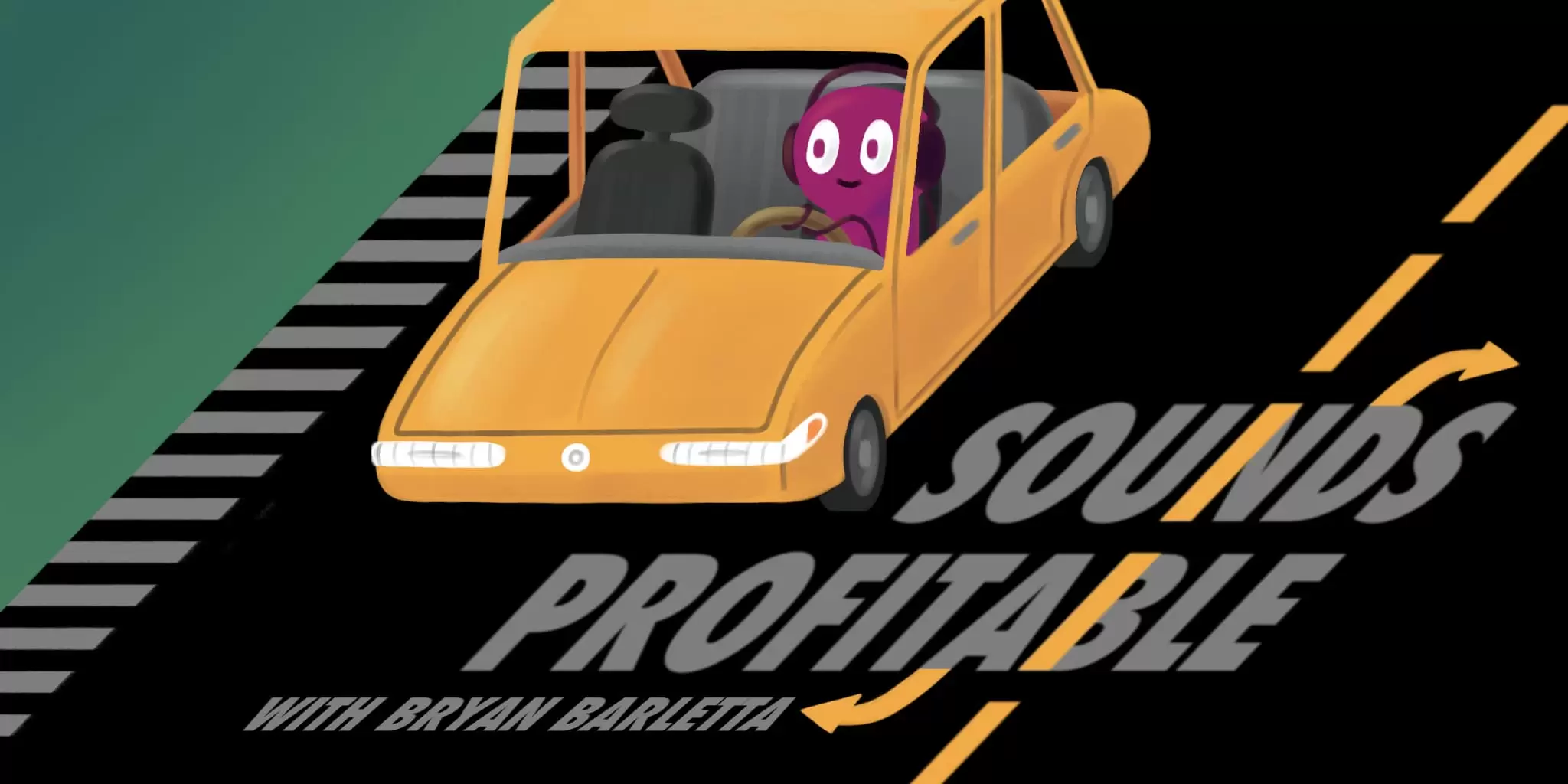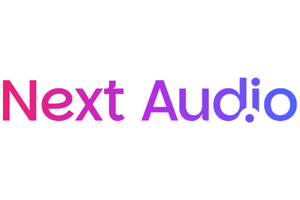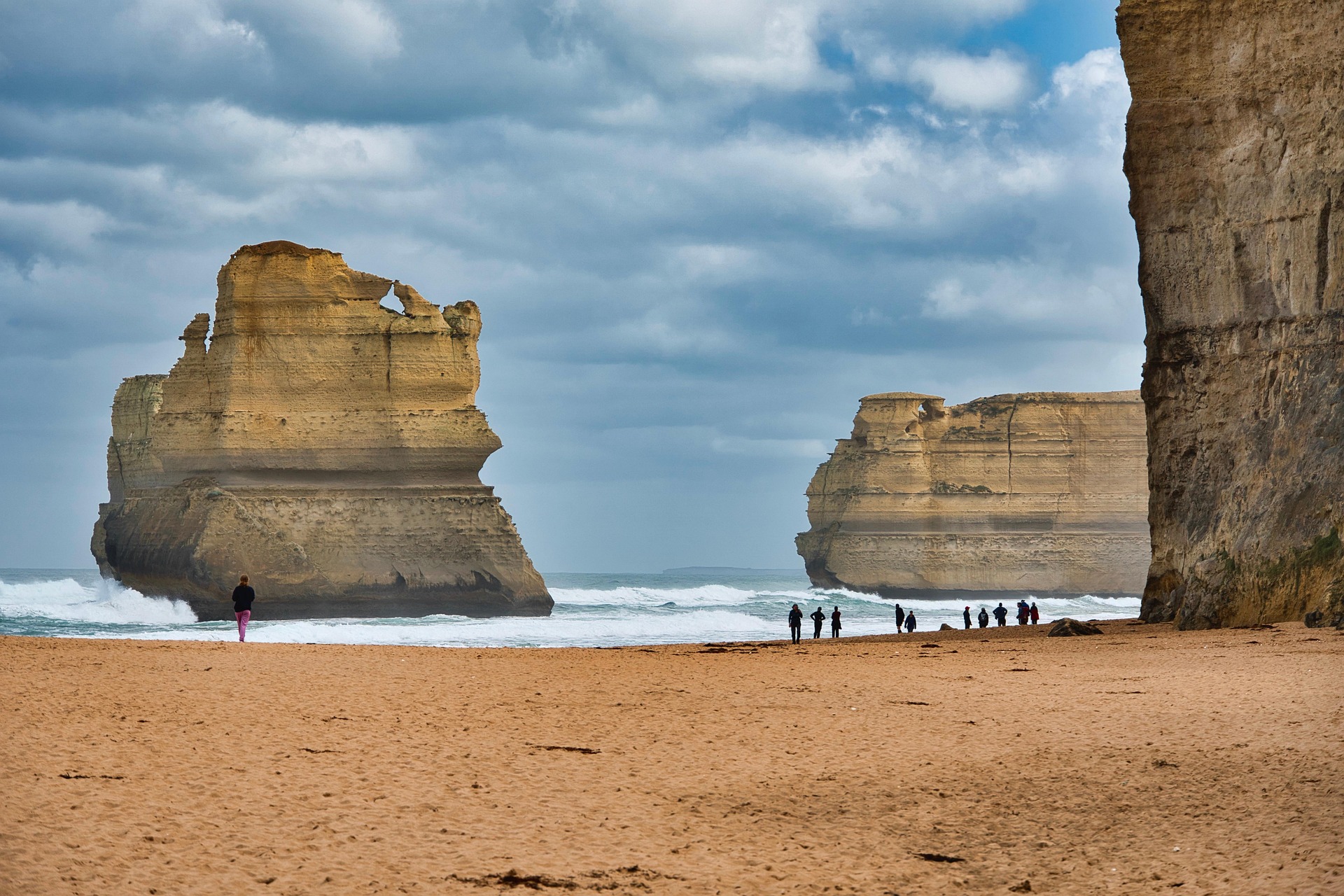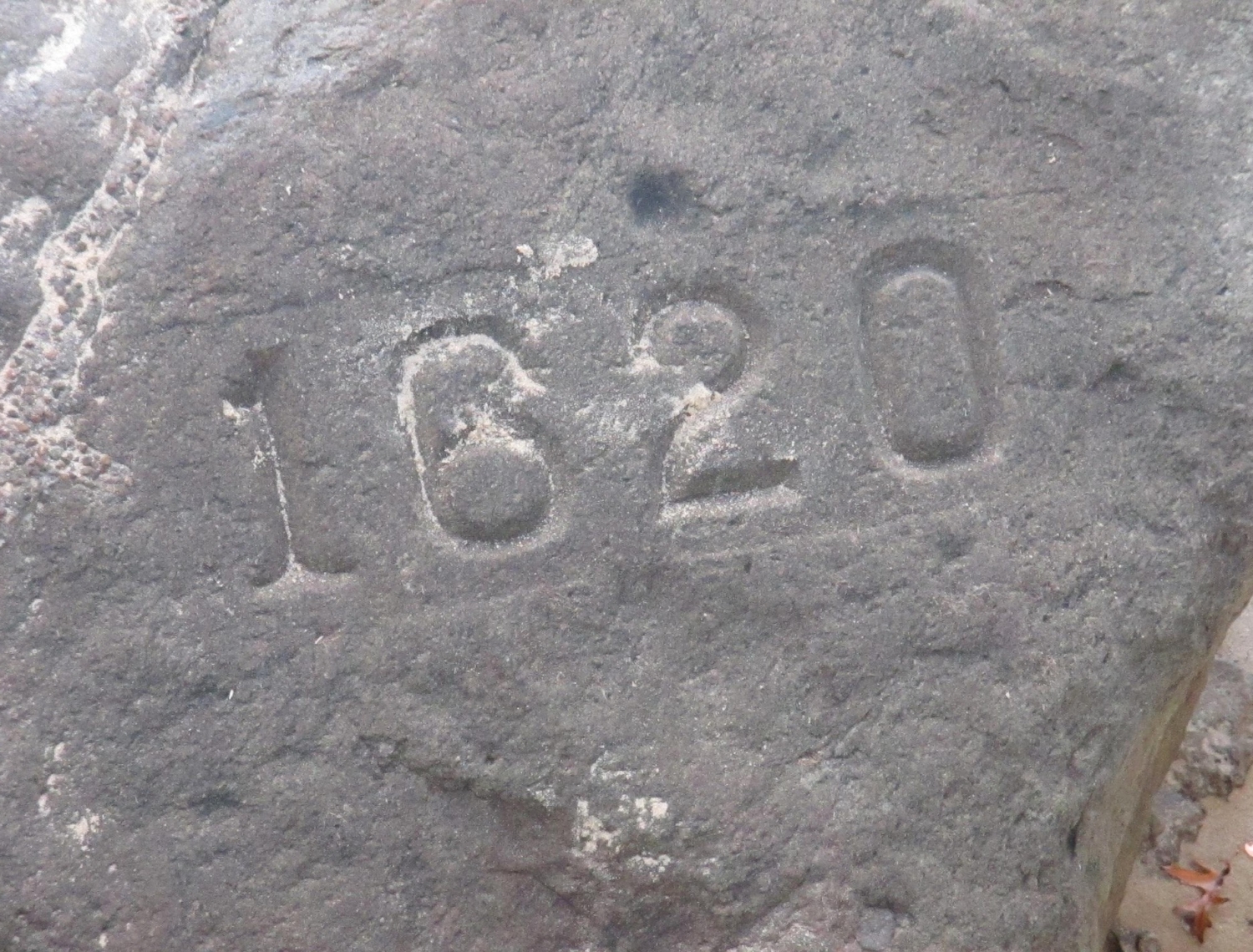James Avery, CEO of Kevel joins us to talk about buy vs build mentality with podcast adtech. Catch it early on our free Supercast feed along with narrated versions of our articles, or find it wherever you get your podcasts.
I don’t think we spend enough time thinking about ad creative.
What I mean by that is, when we think about the tactics of a campaign, we tend to focus more on targeting—show-level or audience-level—than on the creative executions themselves. That’s undoubtedly true when the creative executions are host-read ads, where the delivery of the ad creative is up to the host, relying on a series of “talking points” provided by the advertiser. So when it’s time to analyze a campaign’s performance, it’s often easier to assume an under-performing show means the audience was a bad fit for that brand rather than to figure out what about the delivery didn’t work and give it another shot.
If you haven’t had a chance yet to watch the Product Deepdive I did with Veritonic, hopefully this article will encourage you to check it out. Their product’s entire focus is around campaign and brand optimization from a creative-first perspective. And rewatching it made me realize just how easy it is for podcast advertising to deprioritize the ad creative.
Some of this stems from the adtech side of things. Every podcast adserver that supports tag based attribution and Dynamic Ad Insertion (DAI) offers the ability to track at least at the Line Item or Strategy level, but not all of them support the ability to track at the creative level. So if attribution is the goal, which is becoming more and more of the norm, it can be pretty time-consuming to make sure every publisher on a campaign can track each creative individually.
Part of it is on the publishers themselves. There’s often pushback around the number of ad reads they’ll provide for a campaign, if they’ll even provide any additional ad reads, negating the ability to test multiple executions. And since most campaigns are run across more than one publisher, it’s once again easier to drop shows that don’t work rather than to grade one group of publishers on A/B testing and the rest on a single creative.
More data means more opportunities for improvement, from listener feedback to advertiser success rates. So let’s think through what we can do to start prioritizing a creative-first strategy.
Brand-Owned Creative
I encourage every brand exploring podcast advertising to work with an audio creative agency or the creative team at their podcast media agency to build out a suite of thoroughly tested podcast ads. Our industry can only grow by providing the easiest course of action for a brand to buy podcast inventory. And while host-read ads continue to steal the show on the percentage of ad spend, announcer-read ads are gaining steam, through direct deals, marketplaces, and programmatic.
In the programmatic panel at the IAB Up Fronts, one of the big successes they brought up was that Connected TV (CTV) advertising has flourished thanks to brands being able to repurpose their broadcast television creative. And those assets are made for the brands by their creative agency. As we continue to see an increase in both programmatic and announcer-read ad buys, I expect we’ll see more traditional creative agencies expand to cover audio and enter the space as their brands look to podcasting for results.
These ads, built outside of a campaign, can be expertly tested through controlled exposure surveys, where survey respondents are directly exposed to the ad and are asked to provide detailed feedback (Edison Research, Signal Hill Insights, and Veritonic all offer their own take on this method).
And having well tested creative ready to go live through announcer-read channels is a big win, those ad units also provide great examples to host-read partners of a solid ad read from the brand’s perspective. That, along with well-developed talking points, gives host-read publishers an exact example of a “perfect” ad read that they can then adapt to their own voice.
With a solid creative foundation underfoot, what we need next is more support on the creative-first solutions that podcast adservers can provide us.
Empowering Publishers
New strategies and methodologies only become the norm when everyone can benefit, or when one side makes all the decisions (like in a walled garden). We’ve seen the mass adoption of tag-based attribution in just a few short years, and I’m confident that we’ll see that focus expand into a creative-first strategy led by publishers.
So how do we get started today?
The lowest hanging fruit is for advertisers to prioritize creative brand lift surveys. By tagging each individual creative in a campaign, surveys can be run to determine the effectiveness of the ad at driving brand recall and favorability. If a brand runs 100% share of voice for a specific ad placement on a show and only one creative is used, there’s no way to analyze the efficacy of creative if the ad doesn’t provide results. It’s a pass/fail kind of solution on whether to cut the show from the plan. But if there are multiple creative executions used within each placement, there’s room to optimize toward which ones work better and help strengthen that relationship rather than throw it away.
We hear the complaints so often of how little data is available in podcasting, but this underutilized solution, matched with attribution tagging, can provide some pretty interesting results that will allow for deeper campaign optimization.
Depending on which third-party report you read, the ideal ad exposure for a listener to convert in podcasting sits around 4 impressions. But that data doesn’t take into account the number of different ad reads or how various ads resonated with the listeners. Both surveys and tag-based attribution work very well on their own, but this is the path toward incorporating the two and building up better industry benchmarks around creative executions.
These solutions aren’t just brand-focused either. Publishers absolutely should explore survey solutions to help them better identify what across all their ad reads resonate with their audience. That’s a great proof to have on hand when a requested talking point just doesn’t fit well with the show.
Wrapping It Up
I’m constantly impressed by the data we’re able to get from survey-focused solutions. Podcasting, at its core, is light on metrics and relies on a substantial amount of data modeling. So with every solution that we open ourselves up to exploring, understanding it’s limitations, and determining when it’s the right tool to use, allows us to grow the value of the entire industry.
The large holding companies and brands are more and more curious about podcasting. And while they’re becoming less dismissive of the download (rightfully so), they want more data. Podcast players/apps are likely to provide less data in the future than more, so solutions that can weather those storms are what we should be prioritizing. Which is why I’m so bullish on both podcast attribution and survey solutions, especially when they are combined.
I absolutely encourage you to read my article on the topic of brand studies and watch the Veritonic Product Deepdive. The depth of optimization a creative-first approach provides is in everyone’s best interest.
Rel’s Recs
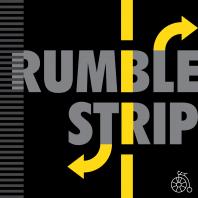
This week, Arielle Nissenblatt of Earbuds Podcast Collective recommends Rumble Strip, from Erica Heilman, which is self-hosted using Blubrry PowerPress, and measured by Blubrry and Podtrac.
Rumble Strip is a mostly Vermont-based podcast hosted by journalist Erica Heilman. It’s part audio journal, part local story documentation. Every episode is unique and somehow heartwarming and heartbreaking at the same time. In a good way. I recommend starting with the most recent episode, “Finn and the Bell.” It’s about a young man named Finn Rooney, who died by suicide in early 2020. But it goes way beyond that. It’s about the community’s reaction of loss and devastation at the death of a community member.
Market Insights – with ThoughtLeaders
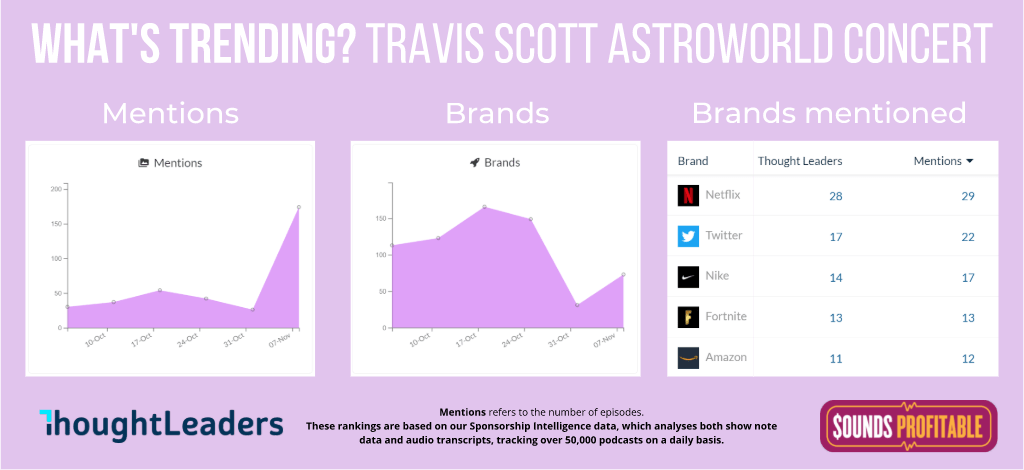
Noam Yadin, Content and Social Media Manager at ThoughtLeaders joins me this week to share insight into current trends:
Following the terrible events that occurred during Travis Scott’s concert, mentions of Travis Scott increased dramatically on podcasts. It’s super interesting to see that as mentions increased, the brands involved with content relating to Travis Scott decreased dramatically.

